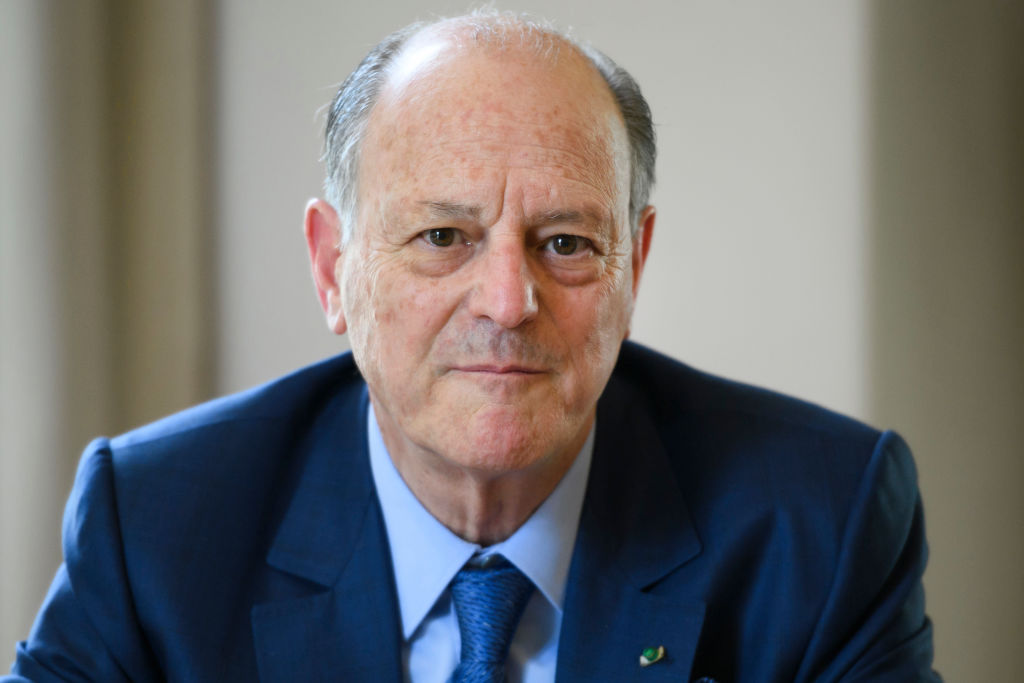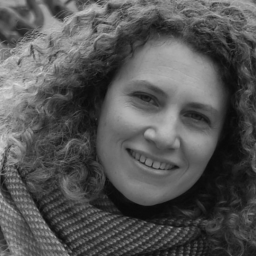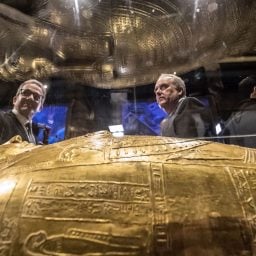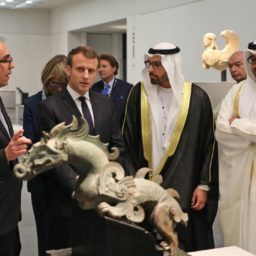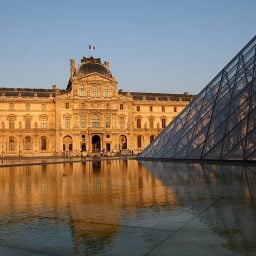The Swiss collector Jean-Claude Gandur has filed a criminal complaint alleging the forged provenance of an Egyptian Fayum portrait dating from the 1st to 2nd century A.D. He bought it in 2014 for “close to € 1 million” from the Phoenix Ancient Art gallery in Geneva, he confirmed by telephone to Artnet News while on a train to Art Basel.
Gandur lodged his complaint on June 3 after a journalist informed him the portrait had the same provenance as other suspect artifacts that have recently made headlines, including the looted golden sarcophagus of the priest Nedjemankh, which the Metropolitan Museum of Art returned to Egypt in 2019.
Posted until recently on the website of La Fondation Gandur pour l’Art in Geneva, the collector’s private foundation, the funerary portrait of a bearded man painted on a mummy fragment has traveled to museums in France and Switzerland and its image was used by a Montreal museum for an interactive digital project.
“The whole world has seen it, and in over eight years, nobody reacted” to its questionable origins, he said, adding that he stopped purchasing antiquities last year. “I’ve come to understand what goes on in this market, and there are a lot of other [dealers and auction houses] who aren’t entirely blanche [pure]. [Police] caught some, and others will follow,” he said.
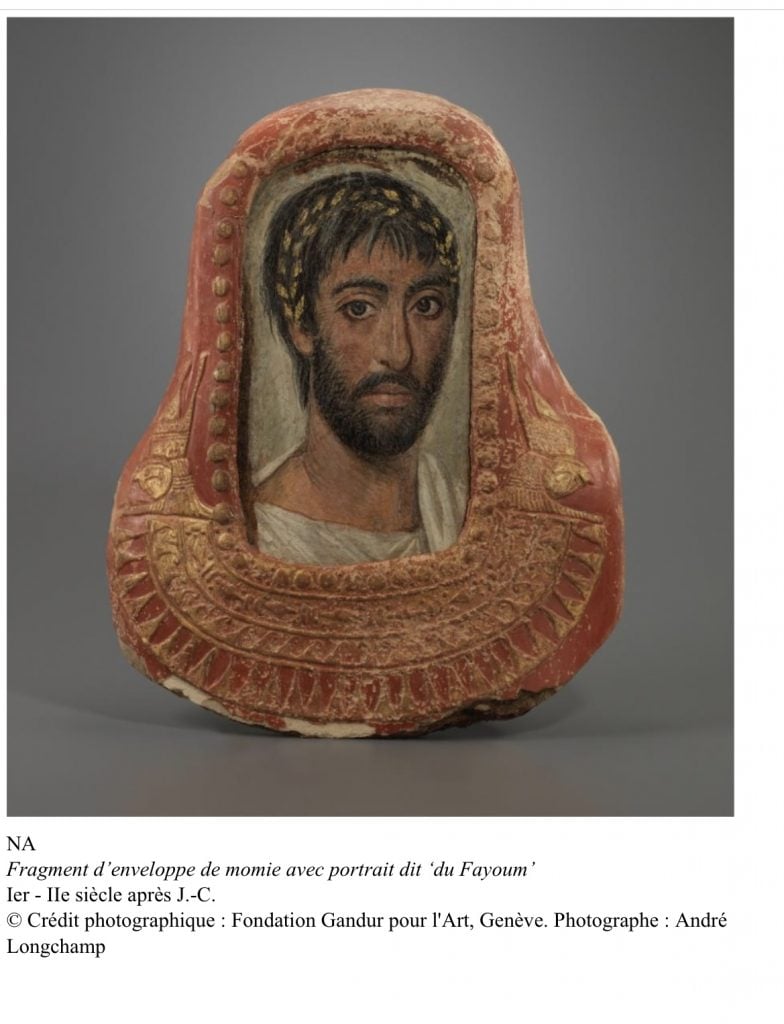
A catalogue entry for the Fayum portrait. courtesy of Fonation Gandur pour l’Art, Geneva.
Like the looted Nedjemankh sarcophagus and a rose granite stele purchased by the Louvre Abu Dhabi in 2016, the portrait is listed as once belonging to the German collector Johannes Behrens and a merchant named Habib Tawadros. Gandur said that he has been unable to locate any evidence of Behrens’s existence.
The collector said he doesn’t know who is ultimately responsible for trafficking the allegedly looted object, but the complaint ensures he has the potential to be compensated for damages. (In Switzerland, it is possible to file a complaint against an unknown party.)
Fayum portrait has other things in common with allegedly looted antiquities under investigation. The collector bought it from Phoenix Ancient Art, which in turn purchased the work from one of the key suspects in the trafficking case, Roben Dib, via the Pierre Bergé auction house in 2013 for a hammer price of €355,000, according to the Art Newspaper. Christophe Kunicki, another suspect, worked at the auction house. A French judge, working in cooperation with the New York District Attorney’s Office, has charged them with gang fraud and money laundering.
A spokesperson for Phoenix Ancient Art Gallery said in a statement: “There are indications from reading what has been circulating in the press about the Egyptian market in France that the provenance provided to our gallery by the auction house Pierre Bergé and its expert Mr. Kunicki was fabricated by a consignor identified in the press as Robin Dib. Such outcome, if verified, would unite Phoenix Ancient Art with the Metropolitan Museum and the Louvre Abu Dhabi in a growing list of possible victims of sales made by Mr Dib and his circle.”
As part of the same case, the former director of the Louvre in Paris, Jean-Luc Martinez, was charged with complicity in organized fraud and money laundering in connection with objects that were allegedly smuggled out of Egypt and purchased by the Louvre Abu Dhabi. Through his lawyers, Martinez has denied the allegations against him in a statement to Artnet News.
Gandur knows Martinez well, having worked with him on the International Alliance for the Protection of Heritage in Conflict Areas (ALIPH), where Gandur is a board member and chairman of its ethics committee. Until recently, Martinez was president of ALIPH’s scientific committee, but he “put himself on leave while we wait and see what happens,” with the case, Gandur explained. “In my opinion he’s a good man, and I believe he’s been abused, in the same way that I was abused,” he said.
“I hope this affair will clean up the market, so we’ll be able to breathe again,” Gandur said. “I always collected ethically and was very careful. Suddenly I’ve been swept up in a situation beyond me,” he said, clearly upset. “Everything is fake, everything has been stolen. It’s frightening, and I hope justice prevails.”
In an example of the diplomatic repercussions to the investigation, France’s ministry of culture and foreign affairs has temporarily suspended Martinez from his duties relating to art trafficking, which were critical to his job as France’s ambassador for international cooperation on cultural heritage. He has held onto his ambassadorship nonetheless.
The Louvre Abu Dhabi—whose acquisitions are approved by a joint commission co-chaired by the director of the Paris museum—is a potent symbol of French so-called “soft power.” Founded in 2007, the U.A.E agreed to pay France over €1 billion to borrow the Louvre brand, expertise, and loans.
